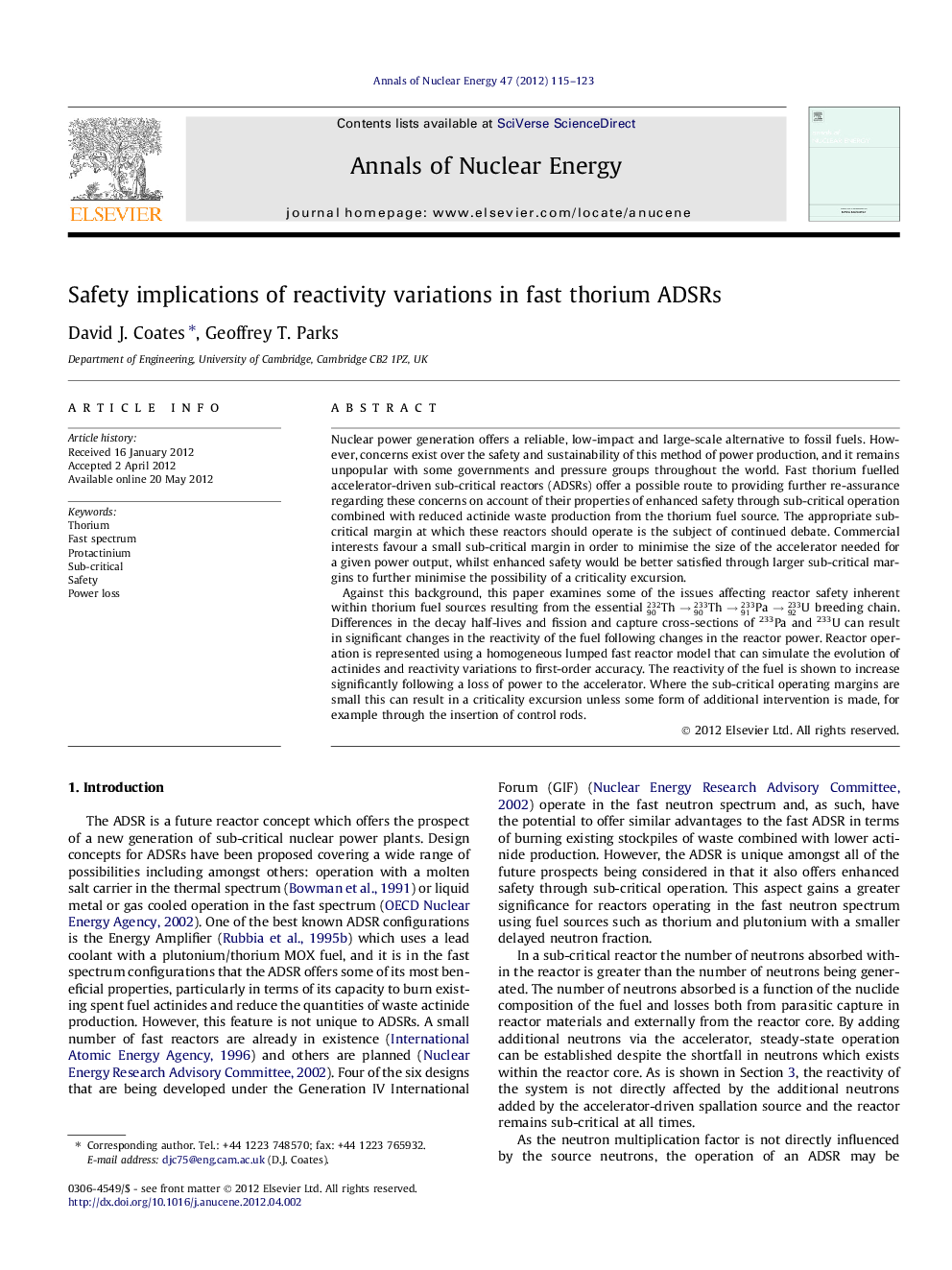| کد مقاله | کد نشریه | سال انتشار | مقاله انگلیسی | نسخه تمام متن |
|---|---|---|---|---|
| 1728928 | 1521151 | 2012 | 9 صفحه PDF | دانلود رایگان |

Nuclear power generation offers a reliable, low-impact and large-scale alternative to fossil fuels. However, concerns exist over the safety and sustainability of this method of power production, and it remains unpopular with some governments and pressure groups throughout the world. Fast thorium fuelled accelerator-driven sub-critical reactors (ADSRs) offer a possible route to providing further re-assurance regarding these concerns on account of their properties of enhanced safety through sub-critical operation combined with reduced actinide waste production from the thorium fuel source. The appropriate sub-critical margin at which these reactors should operate is the subject of continued debate. Commercial interests favour a small sub-critical margin in order to minimise the size of the accelerator needed for a given power output, whilst enhanced safety would be better satisfied through larger sub-critical margins to further minimise the possibility of a criticality excursion.Against this background, this paper examines some of the issues affecting reactor safety inherent within thorium fuel sources resulting from the essential Th90232→Th90233→Pa91233→U92233 breeding chain. Differences in the decay half-lives and fission and capture cross-sections of 233Pa and 233U can result in significant changes in the reactivity of the fuel following changes in the reactor power. Reactor operation is represented using a homogeneous lumped fast reactor model that can simulate the evolution of actinides and reactivity variations to first-order accuracy. The reactivity of the fuel is shown to increase significantly following a loss of power to the accelerator. Where the sub-critical operating margins are small this can result in a criticality excursion unless some form of additional intervention is made, for example through the insertion of control rods.
► A lumped fast reactor model is used to simulate reactivity and power variations in a fast thorium ADSR.
► Neutron flux changes produce reactivity changes due to shifts in the 233Pa and 233U populations.
► On reactor start-up, the reactivity will fall in the early part of the burn-up.
► On reactor shutdown the reactivity will increase.
► A thorium fuelled ADSR operating at keff ⩾ 0.990 is at risk from an accelerator-trip-induced post-shutdown criticality excursion.
Journal: Annals of Nuclear Energy - Volume 47, September 2012, Pages 115–123